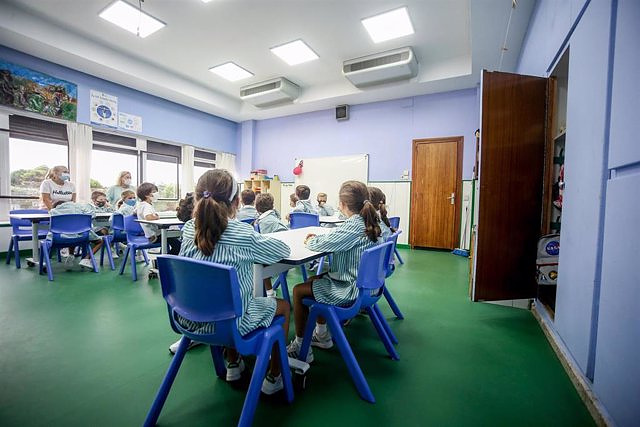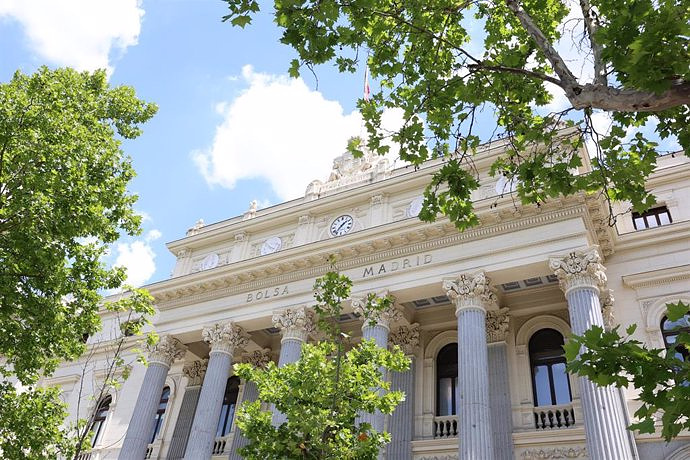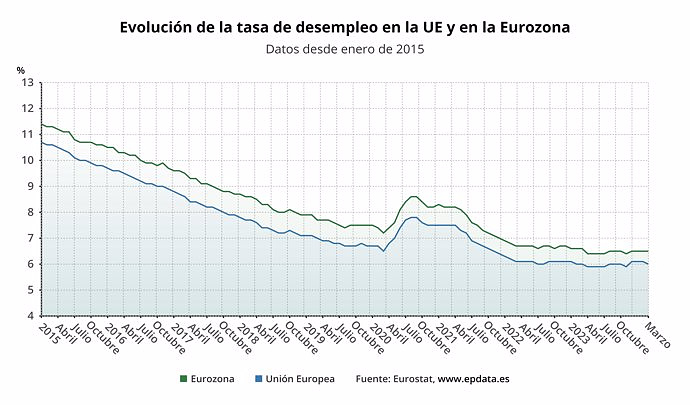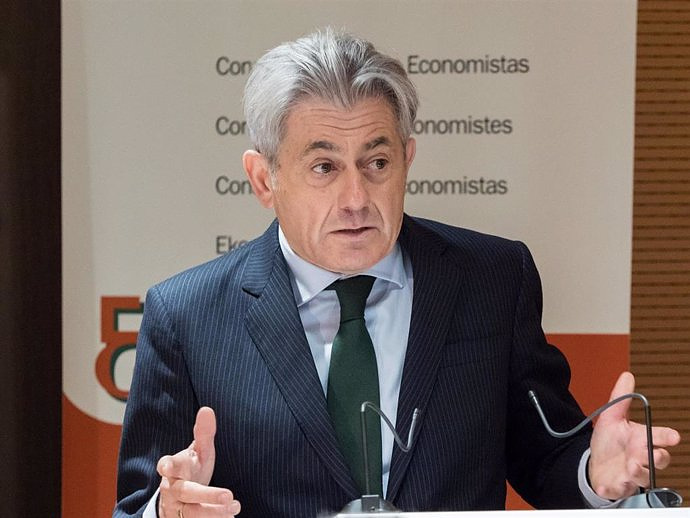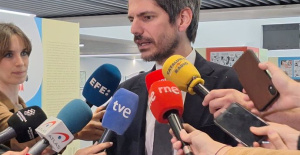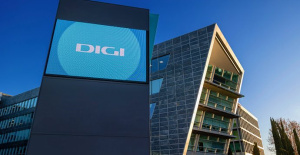Madrid schools have been the ones that have obtained the most money, nine of them receiving more than 26 million euros in aid
MADRID, 9 Jul. (EUROPA PRESS) -
The Ministry of Transport, Mobility and the Urban Agenda has granted 103 million euros in aid from European funds to 69 schools throughout Spain for the energy rehabilitation of their buildings, according to data from the Program to Promote the Rehabilitation of Public Buildings (PIREP). compiled by Europa Press.
This amount represents half of the budget planned for the "climate adaptation" plan for schools announced last year by the Minister of Education and Vocational Training, Pilar Alegría, who ultimately has not managed this Department, and which, according to the leader socialist, would be endowed with more than 200 million euros.
"Now, and even more so, living through this climate crisis that we are suffering, one of the new lines that we want to adopt is an important line with a considerable amount of millions of euros to be able to adapt educational centers to the climate through, as I say, a program of (territorial) cooperation," said the minister last summer in an interview with Europa Press.
However, Education did not manage to launch and manage this climate adaptation plan since the Government enabled, through European funds managed by the Ministry of Transport, two programs, one aimed at autonomous communities and the other at local entities (autonomous PIREP and local PIREP), for the reform and improvement of the energy efficiency of public buildings, including schools.
In this way, it has been the local entities and the autonomous communities that have requested the Ministry of Transport the items for the climatological adaptation of their public buildings, for which reason Education has not transferred money for this, according to sources from the Department that directs Pilar Alegría, who specified that this formula was chosen because it was "more operative and more agile" and, in addition, there was more money than the Ministry of Education could allocate.
Of the 103 million euros allocated to the energy rehabilitation of schools, 70.4 million have been for 44 schools in the autonomous communities, through the regional PIREP, and 32.5 million euros for 25 schools in local entities, granted under the local PIREP.
The schools that have received the most money through the two plans (autonomous and local) have been those from Madrid, since nine centers in the Community of Madrid have received more than 26 million euros, followed by the 24 Galician schools that have received 22.2 million euros in total and the ten Andalusian schools, endowed with 14.1 million euros in aid.
In addition, four schools in Asturias have received the sum of 9.9 million euros for their energy rehabilitation; four schools in the Basque Country, 9.6 million; seven schools in the Region of Murcia, 7.8 million; four schools in Castilla y León, 6.5 million; five schools in Catalonia, 4.6 million; a school in Aragon, 1.8 million; and, finally, a school in the Balearic Islands has received 234,535 euros.
Of the 32.5 million euros in aid granted to municipalities, councils, councils or councils, through the local PIREP, for the energy rehabilitation of 25 schools, 23.4 million were delivered to 20 educational centers on Line 1 of the program and 9.2 million to five schools on Line 2.
The program managed by the Ministry of Transport establishes that all subsidized actions within the framework of Line 2 must be completed and have a work reception certificate before March 31, 2026. For their part, the projects selected in the framework of Line 1 must guarantee the reception of the work, without observations or objections, before September 30, 2024.
The definitive granting of the aid implies that, once the rehabilitation is finished, the buildings must be used for public use for at least 20 years and generate significant savings in energy consumption.
This investment also guarantees a reduction of more than 30% in the consumption of non-renewable primary energy, improvements in accessibility, habitability and promoting the conservation of the building stock, with investments in buildings that currently have multiple uses.
European funds finance up to one hundred percent of the eligible costs of actions aimed at reducing the consumption of non-renewable primary energy by at least 30%, and in the case of complementary ones (sustainability, accessibility, habitability and conservation) 85% of the eligible costs are subsidized, without exceeding 50% of the amount of the main actions (reduction of non-renewable raw energy consumption).
The PIREP seeks to contribute to the fight against climate change, improve the quality of life and solve "important deficiencies" in the public building stock related to habitability issues, such as poor acoustic comfort, air quality inside the building, accessibility issues and improving outdated or outdated distributions with new ways of working.

 Exploring Cardano: Inner Workings and Advantages of this Cryptocurrency
Exploring Cardano: Inner Workings and Advantages of this Cryptocurrency Seville.- Economy.- Innova.- STSA inaugurates its new painting and sealing hangar in San Pablo, for 18 million
Seville.- Economy.- Innova.- STSA inaugurates its new painting and sealing hangar in San Pablo, for 18 million Innova.- More than 300 volunteers join the Andalucía Compromiso Digital network in one month to facilitate access to ICT
Innova.- More than 300 volunteers join the Andalucía Compromiso Digital network in one month to facilitate access to ICT Innova.-AMP.- Ayesa acquires 51% of Sadiel, which will create new technological engineering products and expand markets
Innova.-AMP.- Ayesa acquires 51% of Sadiel, which will create new technological engineering products and expand markets Milei charges against the Spanish Government in response to some "slander and insults" by Minister Óscar Puente
Milei charges against the Spanish Government in response to some "slander and insults" by Minister Óscar Puente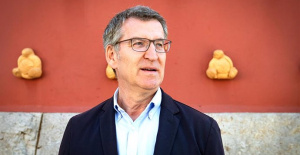 Feijóo, on the UN report: "We are not going to forget either the dictatorship or the terrorist group"
Feijóo, on the UN report: "We are not going to forget either the dictatorship or the terrorist group" A total of 19,887 migrants have arrived in Spain so far this year, 190% more, 15,982 of them in the Canary Islands
A total of 19,887 migrants have arrived in Spain so far this year, 190% more, 15,982 of them in the Canary Islands C-LM, Extremadura or Madrid, among the CC.AA that announce the creation of Bullfighting Awards after the suppression of Culture
C-LM, Extremadura or Madrid, among the CC.AA that announce the creation of Bullfighting Awards after the suppression of Culture How Blockchain in being used to shape the future
How Blockchain in being used to shape the future Not just BTC and ETH: Here Are Some More Interesting Coins Worth Focusing on
Not just BTC and ETH: Here Are Some More Interesting Coins Worth Focusing on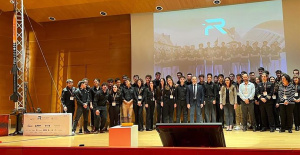 Faraday UPV presents the 'Origin' rocket to exceed 10 km of flight: "It is the beginning of the journey to space"
Faraday UPV presents the 'Origin' rocket to exceed 10 km of flight: "It is the beginning of the journey to space" The Generalitat calls for aid worth 4 million to promote innovation projects in municipalities
The Generalitat calls for aid worth 4 million to promote innovation projects in municipalities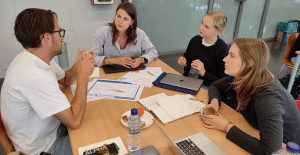 UPV students design an app that helps improve the ventilation of homes in the face of high temperatures
UPV students design an app that helps improve the ventilation of homes in the face of high temperatures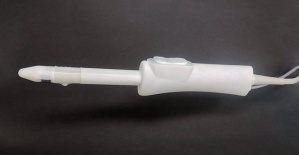 Ivace and promotes a less invasive device for the early detection of prostate cancer
Ivace and promotes a less invasive device for the early detection of prostate cancer A million people demonstrate in France against Macron's pension reform
A million people demonstrate in France against Macron's pension reform Russia launches several missiles against "critical infrastructure" in the city of Zaporizhia
Russia launches several missiles against "critical infrastructure" in the city of Zaporizhia A "procession" remembers the dead of the Calabria shipwreck as bodies continue to wash up on the shore
A "procession" remembers the dead of the Calabria shipwreck as bodies continue to wash up on the shore Prison sentences handed down for three prominent Hong Kong pro-democracy activists
Prison sentences handed down for three prominent Hong Kong pro-democracy activists ETH continues to leave trading platforms, Ethereum balance on exchanges lowest in 3 years
ETH continues to leave trading platforms, Ethereum balance on exchanges lowest in 3 years Investors invest $450 million in Consensys, Ethereum incubator now valued at $7 billion
Investors invest $450 million in Consensys, Ethereum incubator now valued at $7 billion Alchemy Integrates Ethereum L2 Product Starknet to Enhance Web3 Scalability at a Price 100x Lower Than L1 Fees
Alchemy Integrates Ethereum L2 Product Starknet to Enhance Web3 Scalability at a Price 100x Lower Than L1 Fees Mining Report: Bitcoin's Electricity Consumption Declines by 25% in Q1 2022
Mining Report: Bitcoin's Electricity Consumption Declines by 25% in Q1 2022 Oil-to-Bitcoin Mining Firm Crusoe Energy Systems Raised $505 Million
Oil-to-Bitcoin Mining Firm Crusoe Energy Systems Raised $505 Million Microbt reveals the latest Bitcoin mining rigs -- Machines produce up to 126 TH/s with custom 5nm chip design
Microbt reveals the latest Bitcoin mining rigs -- Machines produce up to 126 TH/s with custom 5nm chip design Bitcoin's Mining Difficulty Hits a Lifetime High, With More Than 90% of BTC Supply Issued
Bitcoin's Mining Difficulty Hits a Lifetime High, With More Than 90% of BTC Supply Issued The Biggest Movers are Near, EOS, and RUNE during Friday's Selloff
The Biggest Movers are Near, EOS, and RUNE during Friday's Selloff Global Markets Spooked by a Hawkish Fed and Covid, Stocks and Crypto Gain After Musk Buys Twitter
Global Markets Spooked by a Hawkish Fed and Covid, Stocks and Crypto Gain After Musk Buys Twitter Bitso to offset carbon emissions from the Trading Platform's ERC20, ETH, and BTC Transactions
Bitso to offset carbon emissions from the Trading Platform's ERC20, ETH, and BTC Transactions Draftkings Announces 2022 College Hoops NFT Selection for March Madness
Draftkings Announces 2022 College Hoops NFT Selection for March Madness